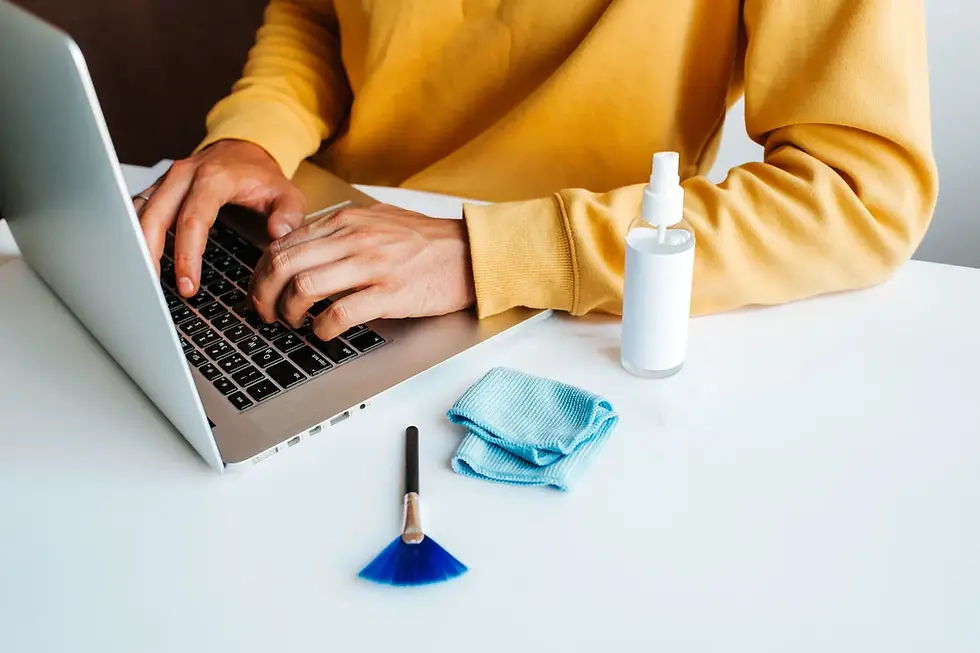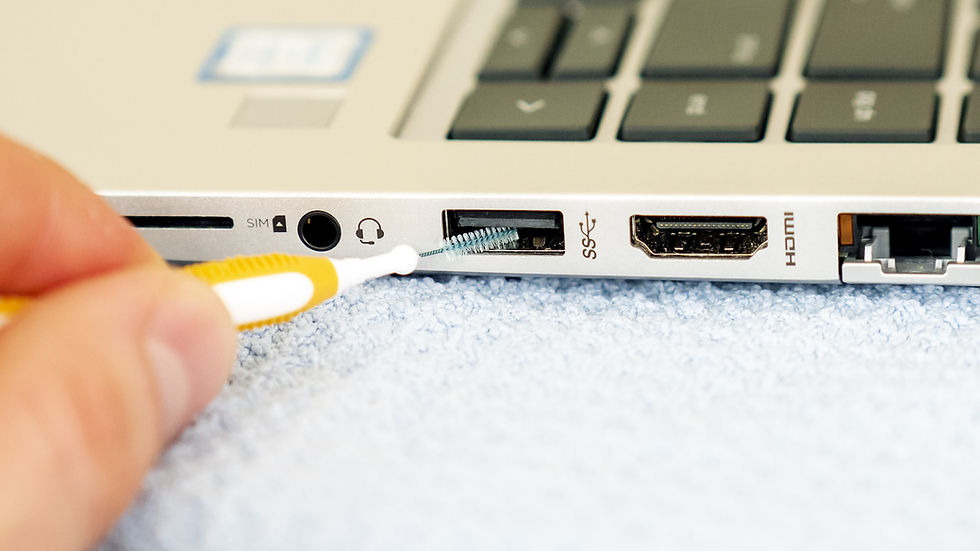
Keeping your laptop clean and sanitized is essential for maintaining a healthy and germ-free computing environment, especially considering the number of times we touch our laptops throughout the day. Here's a step-by-step guide on how to sanitize your laptop safely and effectively:
1. Power Off and Disconnect Before you begin, shut down your laptop and unplug it from any power source. It's crucial to avoid any electrical mishaps while cleaning.
2. Gather Cleaning Supplies For safe and effective cleaning, you'll need the following supplies:
Isopropyl alcohol (at least 70% concentration)
Distilled water
Microfiber or lint-free cloths
Cotton swabs (Q-tips)
3. Clean the Exterior Surface Dampen a microfiber cloth with a mixture of isopropyl alcohol and distilled water. Wring out any excess liquid to avoid dripping. Gently wipe down the exterior surface of your laptop, including the lid, bottom, and sides. Avoid getting any liquid near the ports or openings.

4. Disinfect the Keyboard The keyboard is a hotspot for germs. Dip a cotton swab in the isopropyl alcohol solution and gently clean the spaces between the keys. Be careful not to let any liquid seep under the keys, as this can cause damage. You can also use compressed air to remove debris between the keys.
5. Sanitize the Touchpad and Mouse Buttons Using a clean cloth moistened with the alcohol solution, wipe down the touchpad and the mouse buttons (if applicable). Gently remove any dirt or grime to ensure smooth functionality.
6. Clean the Screen Spray a small amount of the isopropyl alcohol and distilled water solution onto a soft, lint-free cloth. Gently wipe the screen in a circular motion. Avoid pressing too hard to prevent damage to the display. If your laptop has a touchscreen, use a separate microfiber cloth to clean it gently.
7. Don't Forget the Ports Occasionally, dust and debris can accumulate in the ports of your laptop. Use compressed air or a cotton swab dipped in alcohol to clean the USB, HDMI, and other ports carefully.
8. Let It Dry After cleaning, give your laptop some time to air dry. Make sure there is no residual moisture before you power it back on.

9. Wash Your Hands Remember to wash your hands thoroughly after cleaning your laptop, as you might have come into contact with germs during the process.
10. Regular Maintenance Regularly sanitize your laptop to maintain a clean and healthy workspace. Aim to clean your laptop at least once a week, or more frequently if you share it with others or use it in public places.
Note:
Avoid using bleach, ammonia-based cleaners, or harsh chemicals on your laptop, as they can damage the screen and the laptop's surface.
Never spray any liquid directly onto the laptop; always apply it to a cloth first.
If you have specific manufacturer guidelines for cleaning your laptop, follow those instructions.
By following these steps, you can safely and effectively sanitize your laptop, ensuring it remains in top-notch condition while providing a clean and hygienic computing experience.
_edited%20(1).png)
Comments